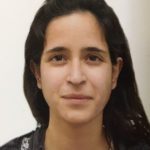Link to Pubmed [PMID] – 23999413
Link to DOI – 10.1016/j.parint.2013.08.014S1383-5769(13)00129-3
Parasitol Int 2014 Feb; 63(1): 195-205
Splenomegaly, albeit variably, is a hallmark of malaria; yet, the role of the spleen in Plasmodium infections remains vastly unknown. The implementation of imaging to study the spleen is rapidly advancing our knowledge of this so-called “blackbox” of the abdominal cavity. Not only has ex vivo imaging revealed the complex functional compartmentalization of the organ and immune effector cells, but it has also allowed the observation of major structural remodeling during infections. In vivo imaging, on the other hand, has allowed quantitative measurements of the dynamic passage of the parasite at spatial and temporal resolution. Here, we review imaging techniques used for studying the malarious spleen, from optical microscopy to in vivo imaging, and discuss the bright perspectives of evolving technologies in our present understanding of the role of this organ in infections caused by Plasmodium.

